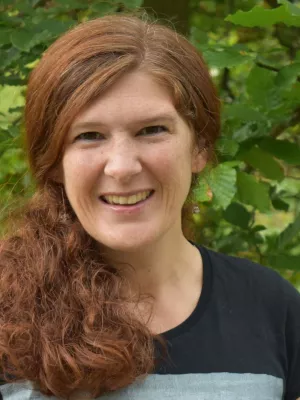
Josefin Madjidian
Research coordinator

Natural selection acts on floral traits associated with selfing rate among populations of Mixed-Mating collinsia heterophylla (Plantaginaceae)
Author
Summary, in English
Premise of research. A major aim in plant research is to understand the micro-and macroevolutionary processes generating the great diversity of mating systems and floral traits found in flowering plants. Using Collinsia heterophylla, a mixed-mating species in a genus with described variation in selfing rate and associated floral traits among species, we investigated (i) intraspecific selfing rate variation in relation to variation in environmental factors and floral traits and (ii) whether selection or genetic drift determine floral trait variation. Methodology. We estimated selfing rate in 21 Californian populations by means of microsatellite markers and investigated its relationship with sampling region, altitude, population ground cover, stage of stigma receptivity, stage of anther-stigma contact (indicating stage of self-pollination), flower size, and start of flowering. Phenotypic floral trait differentiation (PST) for the floral traits was contrasted with neutral genetic differentiation (FST). Pivotal results. The population selfing rate ranged between 0.16 and 0.71 and differed between regions, but it did not correlate with environmental factors. The best predictor of high selfing rate was early stigma receptivity. Stage of anther-stigma contact showed a nonlinear quadratic relation with selfing rate. PST was substantially higher than FST in the four traits, suggesting that variation in mating-related floral traits is shaped by natural selection. Conclusions. The importance of stage of stigma receptivity for predicting selfing rate in C. heterophylla is in line with the pattern found among Collinsia species, potentially indicating that microevolutionary processes in mixed mating influence macroevolutionary processes. The detected effect of natural selection acting on stage of stigma receptivity, in combination with previously detected genetic influence on this trait, gives support to the hypothesis that variability in mating system is adaptive.
Department/s
- Molecular Ecology and Evolution Lab
- Biodiversity
- BECC: Biodiversity and Ecosystem services in a Changing Climate
Publishing year
2017-10-01
Language
English
Pages
594-606
Publication/Series
International Journal of Plant Sciences
Volume
178
Issue
8
Document type
Journal article
Publisher
University of Chicago Press
Topic
- Evolutionary Biology
- Botany
Keywords
- Collinsia heterophylla
- Mating system traits
- Microsatellites
- Natural selection
- Population genetics
- Selfing rate
Status
Published
Research group
- Molecular Ecology and Evolution Lab
ISBN/ISSN/Other
- ISSN: 1058-5893